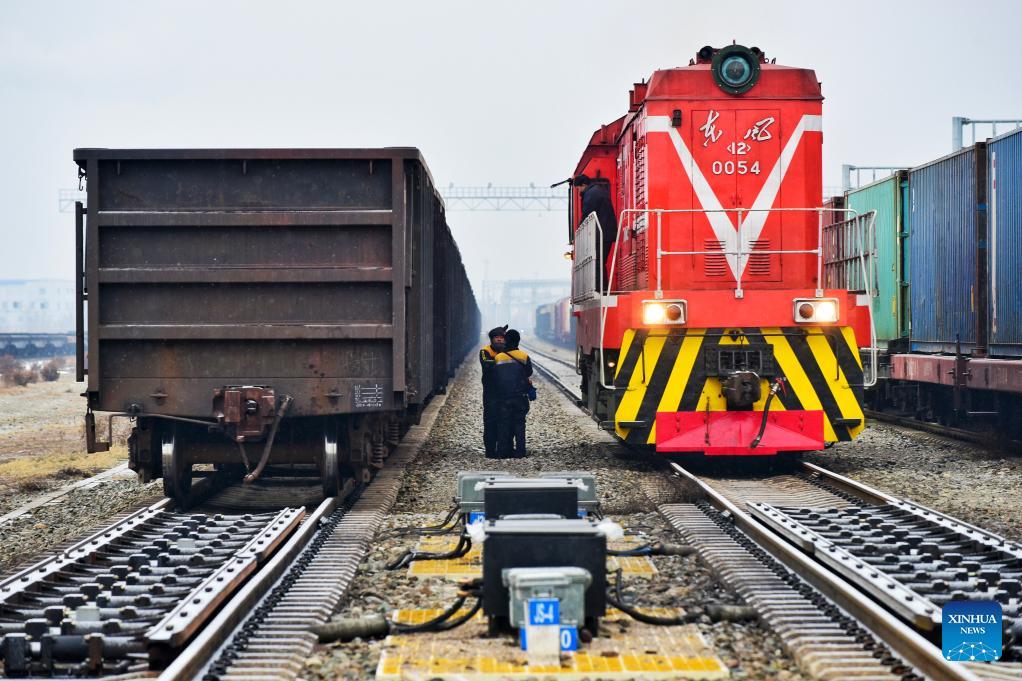Xinhua | January 19, 2024
Staff members check a locomotive at the Horgos Port in Horgos, northwest China's Xinjiang Uygur Autonomous Region, Jan. 15, 2024. The Alataw Pass and the Horgos Port, two major railway ports in northwest China's Xinjiang Uygur Autonomous Region, have handled more than 70,000 China-Europe freight trains since the start of their operations.
The China Railway Urumqi Group Co., Ltd. said that, as of Jan. 16 this year, the Alataw Pass had handled 36,622 China-Europe freight trains since 2013, while the Horgos Port had handled 33,403 such trains since 2016. (Photo by Bai Fengliang/Xinhua)
The Alataw Pass and the Horgos Port, two major railway ports in northwest China's Xinjiang Uygur Autonomous Region, have handled more than 70,000 China-Europe freight trains since the start of their operations.
The China Railway Urumqi Group Co., Ltd. said that, as of Jan. 16 this year, the Alataw Pass had handled 36,622 China-Europe freight trains since 2013, while the Horgos Port had handled 33,403 such trains since 2016.
In order to better advance the Belt and Road Initiative, Xinjiang has focused on improving the quality of operation of China-Europe freight trains in recent years. The number of trains passing through the two ports has steadily increased, with their combined volume of China-Europe freight trains accounting for more than half of the country's total.
Measures to enhance the transportation efficiency of these two ports have also been rolled out, including optimizing operational processes and expanding and upgrading port capacity. In 2023, the stopover time for China-Europe freight trains at these stations was reduced from over 12 hours to 6 to 8 hours, said Yan Huapeng, an official working at the Alataw Pass.
Currently, the Alataw Pass has 115 operating routes for freight trains, providing connection with 25 countries and regions. Horgos Port offers 80 operating routes, linking 45 cities and regions across 18 countries.
The goods transported through these two ports represent more than 200 different categories.


